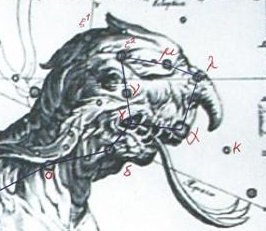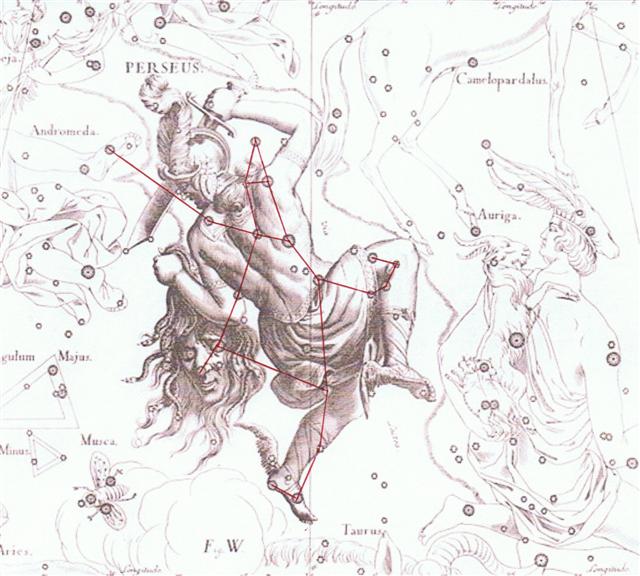Unavoidably
we have to
look both at
the heliacal
and the
nakshatra
dates and
also to be
prepared for
moving in
precessional
time. I
will,
though, not
extend my
alternative
time frames
with also
that when
Hamal was at
0h:
 |
 |
 |
 |
| Gb7-22 |
Gb7-23 (204) |
Gb7-24 |
Gb7-25 |
| FEBRUARY 9 |
10 |
11 (42) |
12 (408) |
| τ Ceti (24.7) |
no star listed (25) |
ANA-NIA |
Al Sharatain-1 / Ashvini-1 / Bond-16 / Mahrū-sha-rishu-ku-2 |
| χ Ceti (26.1), POLARIS, Baten Kaitos (26.6), Metallah (26.9) |
Segin, Mesarthim, ψ Phoenicis (27.2), SHERATAN, φ Phoenicis (27.4) |
| April 14 |
15 |
16 (471) |
17 (107) |
| 'March 18 |
19 |
20 |
0h |
| "March 4 |
5 |
6 (65) |
7 |
| NAKSHATRA DATES: |
| AUGUST 11 |
12 |
13 (*145) |
14 |
| no star listed (207) |
τ Bootis (208.2), Benetnash (208.5), ν Centauri (208.7), μ Centauri, υ Bootis (208.8) |
no star listed (209) |
Muphrid (210.1), ζ Centauri (210.3) |
| October 14 |
15 |
16 |
17 (290) |
| 'September 17 (260) |
18 |
19 |
20 (*183) |
| "September 3 (246) |
4 |
5 (*168) |
6 |
 |
 |
 |
 |
| Gb7-26 (436) |
Gb7-27 |
Gb7-28 (6 * 73) |
Gb7-29 (210) |
| FEBRUARY 13 (*329) |
2-14 (45) |
15 (3 * 137) |
16 (412) |
| ι Arietis (28.0), λ Arietis (28.2), υ Ceti (28.8) |
ALRISHA, χ Phoenicis (29.2), Alamak (29.7) |
Arku-sha-rishu-ku-3 |
η Arietis (31.9) |
| 2h (30.4) |
| κ Arietis (30.3), HAMAL (30.5) Alkes
|
| April18 (*393) |
19 |
20 |
21 (111) |
| 'March 22 |
23 |
24 (*368) |
Equinox (84) |
| "March 8 |
9 |
10 (*354) |
11 (70) |
| NAKSHATRA DATES: |
| AUGUST 15 (227) |
16 (*148) |
17 (229) |
18 |
| φ Centauri (211.0), υ¹ Centauri (211.1), υ² Centauri (211.8), τ Virginis (211.9) |
Agena (212.1), θ Apodis (212.5), Thuban (212.8) |
14h (213.1) |
Neck-2 |
| π Hydrae, χ Centauri (213.0), Menkent (213.1) |
Asellus Tertius, κ VIRGINIS, 14 Bootis (214.8) |
| October 18 |
19 (4 * 73) |
20 (293) |
21 |
| 'September 21 (*184) |
Equinox (265) |
23 |
24 |
| "September 7 (250) |
8 |
9 (*172) |
10 |
The
front
of
the
head
of
Ku
came
3
days
after
the
back
of
the
head
of
Ku.
Hamal
rose
3
days
after
the
First
Point
of
Aries
and
4
days
after
Polaris.
This
is
easy
to
remember.
Next
several
extraordinary
glyphs
are
arriving,
meant
to
attract
attention.
In
Roman
times
it
began
with
the
first
day
after
equinox
('March
25):
 |
 |
 |
 |
| Gb7-30 (440) |
Gb7-31 |
Gb8-1 |
Gb8-2 (214) |
| FEBRUARY 17 (413) |
18 |
19 (50) |
20 (*336) |
| ξ¹ Ceti (32.1) |
θ Arietis (33.3), Mira (33.7) |
no star listed (34) |
ξ Arietis (35.0), ρ Ceti (35.4), ξ² Ceti (35.9) |
| April 22 |
23 |
24 (114) |
25 (450) |
| 'March 26 (*5) |
27 |
28 |
29 (88) |
| "March 12 |
13 |
3-14 (73) |
15 (*359) |
| NAKSHATRA DATES: |
| AUGUST 19 (231) |
20 |
21 (*153) |
22 |
| Al Ghafr-13 / Svāti-15 TAHUA-TAATA-METUA-TE-TUPU-MAVAE |
ι Lupi, 18 Bootis (216.3), Khambalia (216.4), υ Virginis (216.5), ψ Centauri (216.6), ε Apodis (216.8) |
Asellus Primus (217.8) |
τ Lupi, δ Octantis (218.1), φ Virginis (218.7) Fomalhaut
|
| 15 Bootis (215.2), ARCTURUS (215.4), Asellus Secundus (215.5), SYRMA, λ Bootis (215.6), η Apodis (215.8) |
| October 22 (295) |
23 |
24 |
25 |
| 'September 25 (*188) |
26 |
27 (270) |
28 |
| "September 11 (254) |
12 |
13 |
14 (*177) |
Gb8-1 exhibits twins (toko-rua) who are united but not like Janus facing in opposite directions. It is not the time after a solstice when one is looking back and the other looking ahead.
In the background we recognize the same sign as at Hamal, Sirrah, and Bharani - though here upside down:
 |
34 |
118 |
 |
40 |
 |
| Gb7-28 (6 * 73) |
Ga5-8 (4 * 29½) |
Ga6-19 (3 * 53) |
| HAMAL |
152 (8 * 19) |
SIRRAH |
BHARANI |
| "March 10 (*354) |
193 |
"September 19 (*182) |
Possibly these 'wings' indicated nighttime (when stars could be observed), because beyond the Head of Ku there was daylight:
W in Cassiopeia is like Σ turned around on its back - indicating a position below the pole. As μ means water it ougth to mean the opposite, viz. land.
| Egyptian tusk |
 |
Phoenician shin |
 |
Greek sigma |
Σ (σ, ς) |
|
Wikipedia: Shin (also spelled Šin (šīn) or Sheen) literally means 'teeth, 'press', and 'sharp' ...
The symbol Σ is currently used as an expression for 'sum'. The Phoenician shin is oriented in another way, similar to how Cassiopeia is read in the night when in a low position - as Celestial W when below the pole, in contrast to the Celestial M when above it.
Greek sigma therefore resembles Cassiopeia in between, when she was in the west at the time when the Sun was rising in the east.

|
I mention this because viri could correspond to Σ, the time when the Full Moon face was at the September equinox. ... On the twenty-fifth day of the first month (Vaitu Nui), Ira and Makoi set sail; on the first day of June ('Maro'), the bow of Ira's canoe appeared on the distant horizon, came closer and closer on its course, and sailed along, and finally (one) could see the (new home) land. The canoe reached the islets (off the coast), and Ira saw that there were three such islets. Ira said, 'Hey you, crew of young men, the vision of Hau Maka, our father, which he revealed to me, has come true. There are 'the handsome sons of Te Taanga, who are standing in the water', for this is the name that the dream soul of Hau Maka gave them. Unforgotten (? kai viri kai viri) are they, these three. And therefore this is the (right) land lying there; this is Te Pito O Te Kainga, which also received its name from the dream soul.'
ξ¹ and ξ² Ceti were like twin star pillars (ana) defining the beginning and end of the quartet of days beginning after the equinox in 'March 25 (84). 
| Egyptian djed |
 |
Phoenician sāmekh |
 |
Greek xi |
Ξ (ξ) |
|
... In rongorongo times the last Greek lettered star in Orion (ξ) rose with the Sun in June 21. The letter seems to have originated from the Phoenician letter samekh (tent peg, supporting prop), which in turn may have been derived from the ancient Egytian djed column ...

|
At the time of the Hyades Gate calendar day 50 (FEBRUARY 19) could have referred to Perseus: 
Because Algenib Persei (α) was in rongorongo times rising with the Sun at right ascension 50.0 (in May 10). *34 (April 24) + 366 = *400 and *400 - 64 = *336 (= 14 * 24). But in my presentations above I have used 365 days for a year, which means FEBRUARY 20 has been described as day 51 + 365 - 80 = *336.
|










